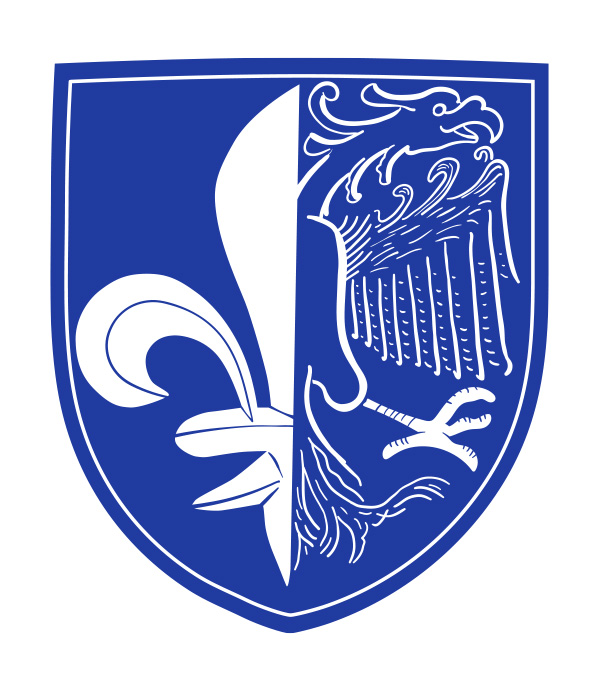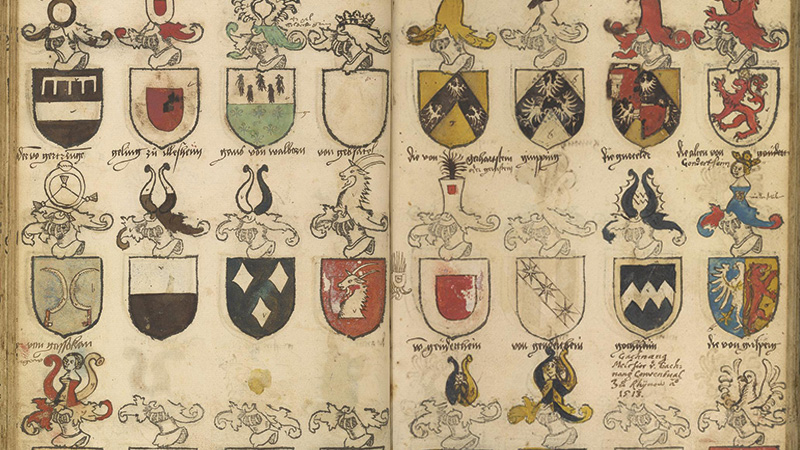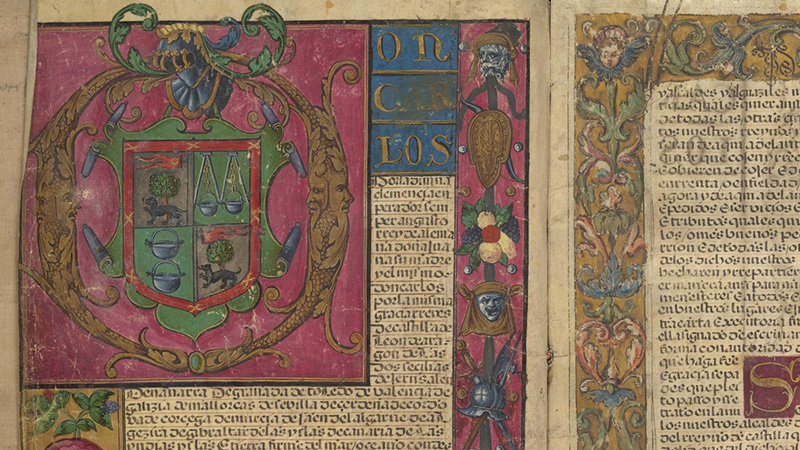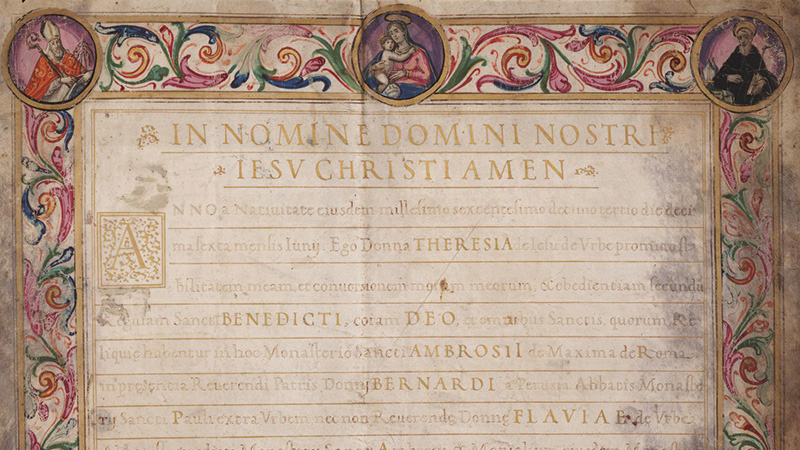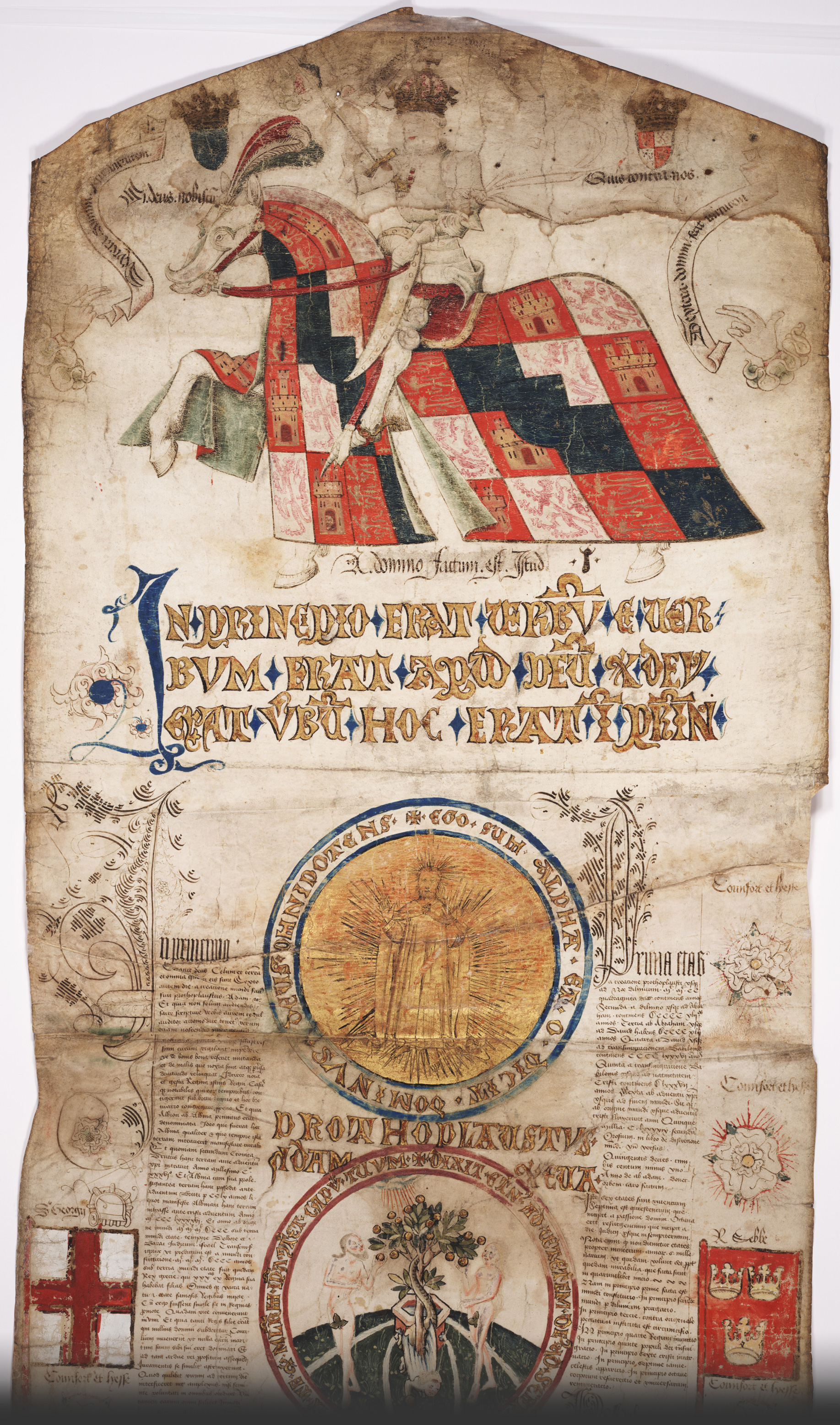
Rolls such as this one are read vertically, which distinguishes them from scrolls, which are read horizontally. Only a small portion of this 15-foot-long roll is visible: the beginning of the second section, linking King Edward IV to seven noble and royal ancestors. This decorative pause is one way the roll is more like a propaganda document than a modern family tree.
Genealogical scrolls
Like the modern family tree, medieval genealogies deal with ancestry and make claims about relationships. The roll featured here is a political celebration, made to legitimize King Edward IV’s claim to the throne of England after he deposed Henry VI. It links Edward IV to the very creation of the world, showing his descent from Adam and Eve through Noah, and claiming blood ties to important historical rulers of Britain and Europe.

DNA testing box
Family trees are still of interest today. Some people turn to technological methods, including genetic testing, to investigate their own genealogy. As the product description for 23andMe DNA testing kits claims, “Discover where in the world your DNA is from across 1500+ regions—in some cases, down to the county level.” While the reliability of such tests is not assured, they have become increasingly popular.


